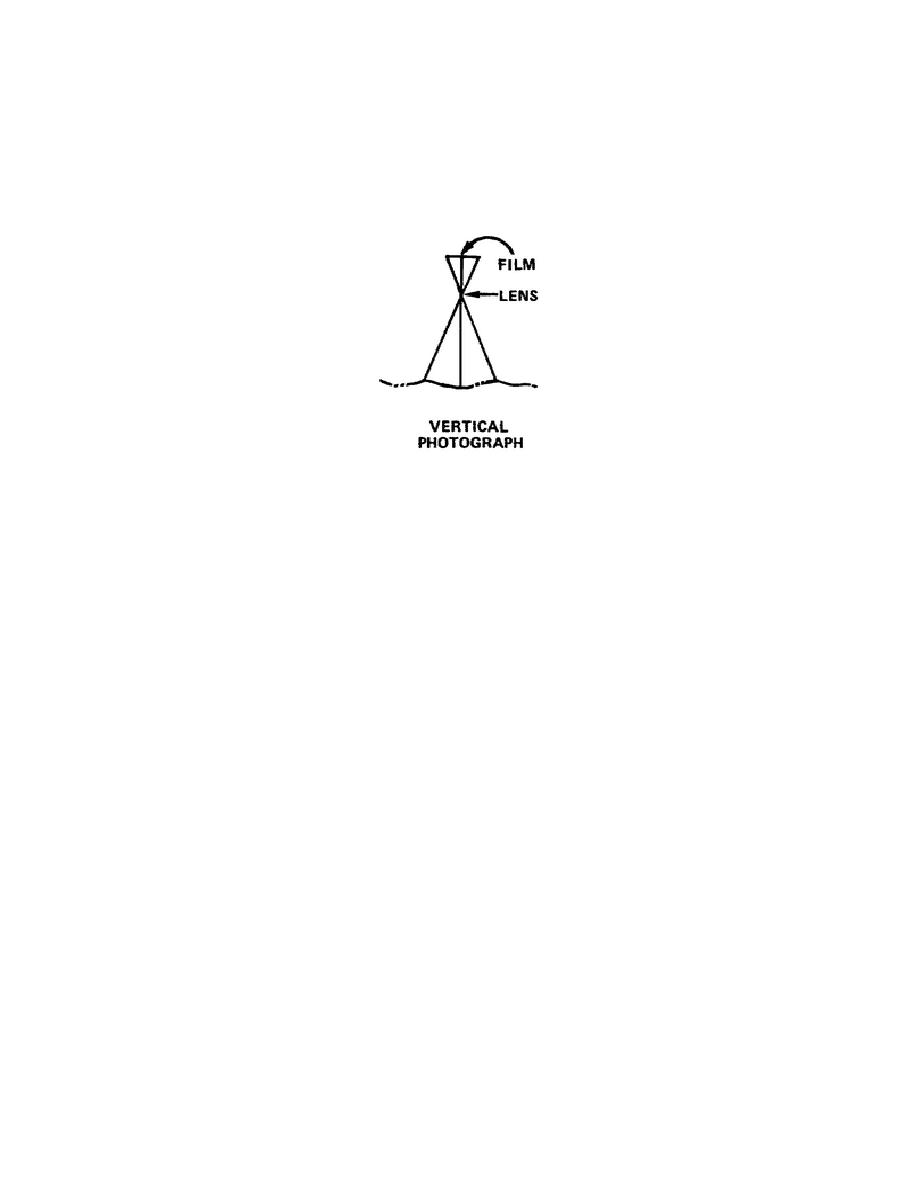
untrained viewer of the prints finds that he has difficulty identifying objects.
(3) Shadows are very important in looking at prints taken with the camera
in the vertical position. In viewing a vertical print, the shadows should fall
toward the viewer and the light source should be in about the same position as
the sun was when the picture was taken.
If the prints are viewed with the
shadows falling away from the person viewing them, hills will often appear to be
valleys and valleys, hills.
Figure 2-5.
Vertical photograph
d. Horizontals.
(1) Horizontal aerial documentation photos seem almost to have been taken
from a viewpoint on the ground with the lens axis parallel to the subject. They
can be taken only in mountainous terrain when the aircraft can fly below the
crest of the mountain (fig 2-6).
(2) Using this technique, profiles of ridges, slopes and approaches to
mountain crests, can be photographed, often enabling photo interpreters to see
under enemy camouflage.
e. Pinpoints.
(1) A pinpoint merely shows a small selected area in detail.
Pinpoints
may be vertical, oblique, or horizontal. Their main value lies in the fact that
they enable interpreters to study the subject more closely.
(2) Pinpoints may be made in one of two ways, the aircraft approaches the
target at a low altitude or the photographer uses a telephoto lens.
33


 Previous Page
Previous Page
